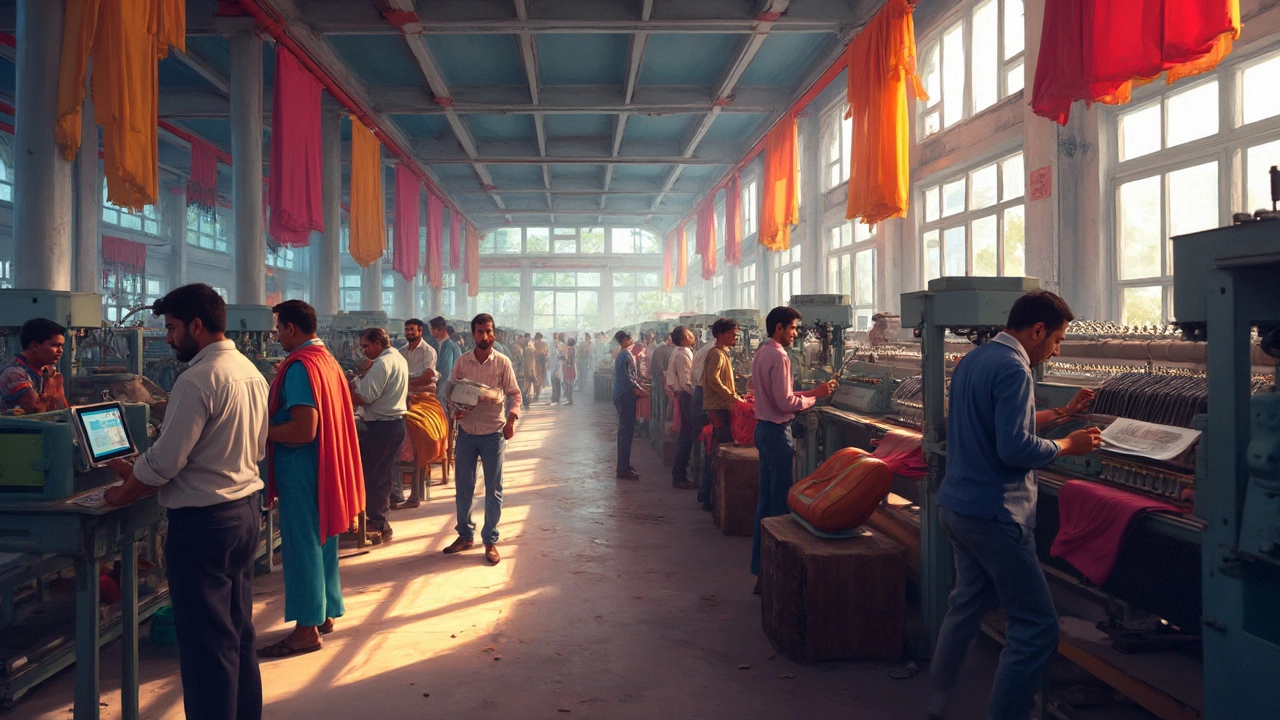Gujarat Textile Policy 2024: What It Means for Manufacturers
If you’re in the textile business or thinking of setting up shop in Gujarat, the 2024 textile policy is worth a close look. The state government rolled out a set of incentives aimed at boosting production, attracting investment, and modernising the sector. In plain terms, the policy offers cash subsidies, tax breaks, and easier access to land and utilities for eligible projects.
Why does this matter? Gujarat already hosts a large share of India’s textile output, and the new policy tries to keep that momentum going. By lowering the cost of setting up a plant or upgrading existing facilities, the government hopes to create more jobs and push Indian fabrics into global markets.
Key Incentives You Can Use Right Now
Capital subsidy: Up to 35% of the project cost can be covered, with a maximum cap of ₹5 crore for small‑scale units. The subsidy is released in two instalments – one after the project starts and the second after it reaches 70% capacity.
Interest‑free loans: The Gujarat State Financial Corporation (GSFC) offers loans at zero interest for up to 5 years on approved projects. This helps cash‑flow‑tight entrepreneurs avoid heavy borrowing costs.
Tax incentives: New textile units enjoy a 5‑year exemption from GST on capital goods, plus a reduction in stamp duty on land purchases. Existing firms that expand can claim a one‑time rebate on machinery tax.
Skill development support: The policy funds up‑skilling programmes for workers, covering up to 50% of training costs. This ensures your workforce is ready for modern, automated processes.
How to Qualify and Apply
First, check if your project meets the eligibility criteria. The policy targets:
- Units setting up new textile parks, processing plants, or garment factories.
- Projects that use at least 30% eco‑friendly technologies, such as water‑saving dyeing methods.
- Investments of at least ₹2 crore for small units, ₹10 crore for medium, and ₹50 crore for large projects.
Next, prepare a concise proposal. Include a clear business plan, projected employment numbers, and a sustainability plan. Submit the proposal to the Gujarat Industrial Development Corporation (GIDC) through their online portal. After an initial review, you’ll be asked to present a brief pitch to the state’s textile committee.
Once approved, you’ll receive a letter of intent. The subsidy and loan disbursement happen after you submit completion certificates for each project phase. Keep records of all expenses; the audit team checks them before releasing the next instalment.
Tip: Pair the policy benefits with local supply‑chain partners. Gujarat has a strong network of yarn mills, dye houses, and logistics providers. Using local vendors can reduce transportation costs and help you meet the eco‑friendly requirement faster.
In short, the Gujarat Textile Policy 2024 is designed to make it cheaper and easier to start or grow a textile business in the state. By understanding the incentives, meeting eligibility, and following the application steps, you can turn the policy into a real advantage for your bottom line. Ready to give your textile venture a boost? Start drafting that proposal today.

Textile Policy 2024 Gujarat: What Textile Manufacturers Need to Know
The 2024 textile policy in Gujarat is stirring quite a buzz among manufacturers in India. This policy aims to turn Gujarat into a global textile hub by offering new incentives and support for textile units, both big and small. It focuses on everything from financial perks to green technologies. If you're a textile maker looking to expand, this updated policy comes packed with practical benefits. Here are the main highlights and what they actually mean for your business.
Read More